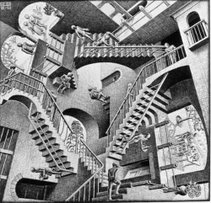 When we hear those words, we imagine deaf people communicating by movements of their hands, arms and bodies and by facial gestures. But not only completely deaf people use it. Also people with any kind of hearing or speech impairment, and, as a side note, also some of their relatives or friends.
When we hear those words, we imagine deaf people communicating by movements of their hands, arms and bodies and by facial gestures. But not only completely deaf people use it. Also people with any kind of hearing or speech impairment, and, as a side note, also some of their relatives or friends.Some think that Sign Language is only spelling out on fingers. That is used when they need to talk about people's names or places, but fingerspelling is not Sign Language.
Many people take for granted the "internationality" of the sign language. Truth is that there is not such. Ever country has its "official" sign language, and certain pair can be as mutually untellegible as many spoken languages are between them. Differences may be in grammar or vocabulary.
The most popular (and good to follow) example for this is the Nicaraguan Sign Language.
 There are not reliable statistics to know how many people in the world are deaf. First, because sensus may blur them together with people having other kinds of handicaps. Second, because there is a thin line from "hard of hearing" to "deaf". Third, for babies it might be difficult to diagnose such a condition, and many go to an older age until they are recognized as deaf. When in advanced aging, people lose their ability to hear, and go to the category of "hard of hearing", and some to deaf (people older than 65 have eight times more likely to have hearing impairment than people between 18 and 34 years old).
There are not reliable statistics to know how many people in the world are deaf. First, because sensus may blur them together with people having other kinds of handicaps. Second, because there is a thin line from "hard of hearing" to "deaf". Third, for babies it might be difficult to diagnose such a condition, and many go to an older age until they are recognized as deaf. When in advanced aging, people lose their ability to hear, and go to the category of "hard of hearing", and some to deaf (people older than 65 have eight times more likely to have hearing impairment than people between 18 and 34 years old).Some estimate that in 1990, the United States had nearly 2.300.000 people considered hard of hearing and deaf. This is a little more than 8.5 % of the population!
I think the most well-known deaf person is Helen Keller. She also goes to my list of admired people.












No comments:
Post a Comment